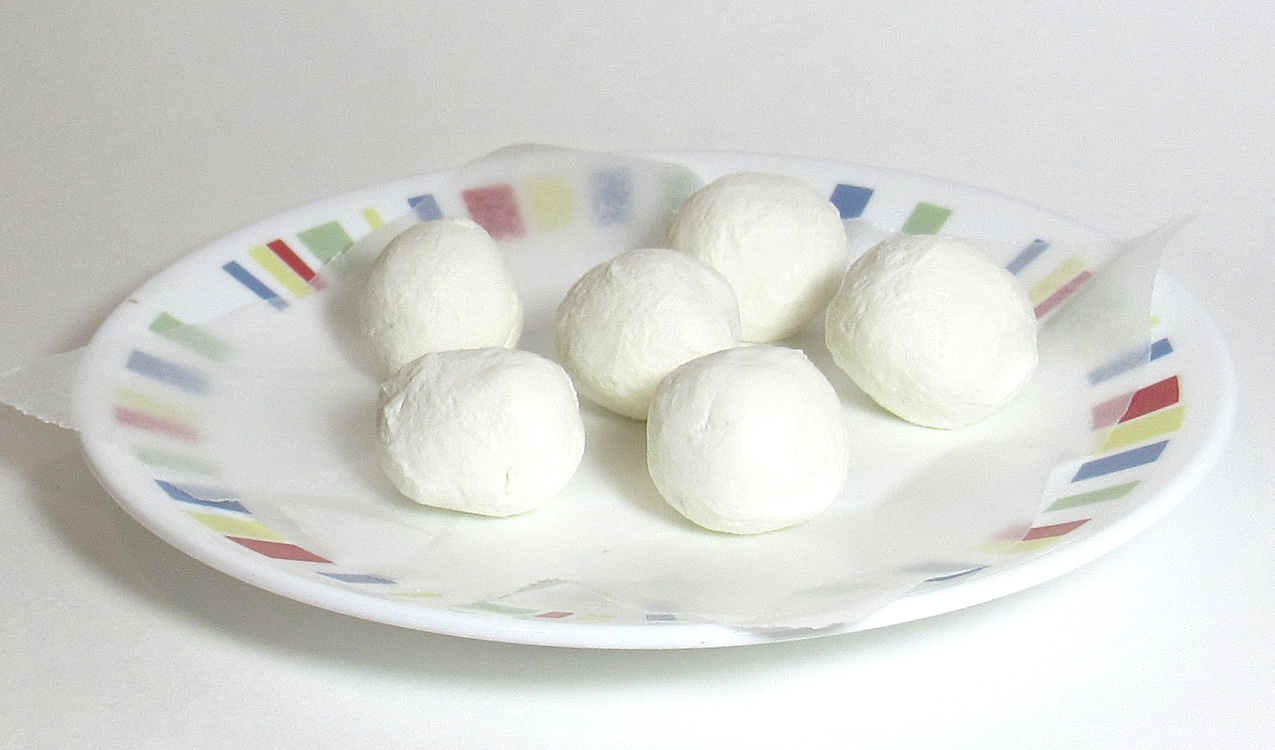Truffles are the candy center that, when ready, will be dipped in milk chocolate. (After dipping, they are still called truffles.)
When mixing the truffle ingredients together, the white chocolate will be melted. The cream cheese may be soft.
When stirring the mixture together, blend it well so the cream cheese will be throughly distributed through the white chocolate. It is preferable not to end up with tiny chunks of cream cheese.
As you stir the ingredients together, the mixture will get thicker and change texture.
When the mixture is stirred together and well blended, it is still too soft for forming into round truffle centers in preparation for dipping.
Put the bowl containing the mixture in a dry area to firm up.
Every 5 minutes or less, during the mixture firming process, completely blend the mixture into itself to commingle the dryer part with the rest. After one or several blendings, the texture changes and becomes smoother.
The mixture will gradually get firmer.
A cooler temperature causes the mixture to firm faster. Depending on temperature, it may take less than an hour to firm up, perhaps less than 30 minutes. Or even less than 15. With less-than-ideal conditions, it may take a few hours.
Because they don't have air conditioning, the Amish generally make their chocolate candy when the weather temperatures are low enough to cool food in a non-heated enclosed porch. It can firm the mixture quickly. Unlike kitchen appliance refrigerators (which they also don't have), winter days generally are low humidity, more so than most days of other seasons.
Note: Because a refrigerator has high humidity, use it only if you are in a hurry to firm the mixture quickly. Refrigerated mixture will firm fast, so completely blend the mixture into itself every 3 minutes or less.
When the mixture is firm enough to form round, bite-size rounds for candy centers, they are ready to form. The mixture should be pliable, like a child's playdough or play clay. It may be quite soft. So long as it can be formed into a roundish shape, it is firm enough.

Formed truffle candy centers.
The truffles should be formed no less than 1/2 inch in diameter and no more than 1−1/2 inches in diameter.
If less than 1/2 inch in diameter, the amount of milk chocolate compared to the truffle candy center may overwhelm the taste the truffle would have provided. Conversely, if they are more than 1−1/2 inches in diameter, the truffle candy center may overwhelm the taste of the milk chocolate that it will eventually be dipped in.
Remember, the truffle candy centers do not need to be perfectly shaped. Later, they will be covered with milk chocolate, which doesn't care what it covers — egg-shaped, squarish, or other shaped or misshapen candy.
As you form each one, place the truffle candy center on a plate lined with wax paper.
The centers will be too soft to dip at this point.
Let them stand in a coolish, dry place until the formed truffles become firm enough to dip in milk chocolate — firm enough so they don't lose their shape or fall apart during the dipping process. This may be 15 minutes to an hour or more, depending on ingredients, temperature, and humidity.
(Do not use a refrigerator at this point. Refrigerators are too moist. Further, cold truffles could dry the milk chocolate covering too fast when they are dipped, perhaps cracking the covering or, in the near future, develop discoloring with lighter-brown spots.)
When the formed truffle candy centers have dried enough so they won't fall apart, they are ready for dipping in milk chocolate.
The sooner the centers are dipped after they are ready, the softer they tend to remain. If you prefer soft insides, dip them as soon as they are firm enough so they won't break. Dip them gently.
If the dipping will be delayed, overnight for example, the truffle candy centers may be covered with a plastic wrap or put into an airtight container to slow the hardening.